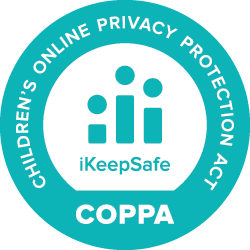Bounce
The properties of a material make it just right for some purposes. In this activity, you will explore the special properties of latex rubber and discover how this valuable material can be used and re-used.
Facilitation Tips and Potential Student Answers
Be sure to scroll to the bottom of the Educator Overview until you see STUDENT CONTENT BELOW THIS LINE. Interleaved in the Student Content section, you will see educator facilitation tips and potential student answers displayed in red, italic text when applicable.
Resource Title:
Bounce
Description:
The properties of a material make it just right for some purposes. In this activity, you will explore the special properties of latex rubber and discover how this valuable material can be used and reused.
Target Grade Level:
Grades K-4
Discipline or Course (Audience):
Science
Time Frame:
One to two 45-90 minute sessions without extensions
Suggested Grouping:
3-4 students
Educator Prep:
National, state, and local standards ask students to develop an understanding of the properties of matter. The unique properties of organic polymers make them essential for many products. One valuable polymer is rubber. In chemical terms it is an elastomer (an elastic hydrocarbon polymer) and a thermoplastic (changing its flexibility depending on the temperature.) Natural latex rubber is extracted from rubber trees grown in tropical zones. The tree lives for about 32 years, using a great deal of water and nutrients. To make natural rubber more durable and less sensitive to temperature changes, it is vulcanized—a process invented by Charles Goodyear in 1839, which changes the sulfur bonds between its long molecules and improves its resistance and elasticity in lower temperatures. Carbon black is often added to improve its strength in tires.
Rubber is also an ideal material for sports balls like racquetballs. The standard ball has a diameter of 2.25 inches. Rubber is almost always the material of choice. In the activity, students discover that the elasticity of a racquetball changes with temperature. They examine the requirements of a good running track (resilience and elasticity) and compare them to those of a good automobile tire to develop an understanding that chemical engineers design materials with the ideal properties for certain purposes.
Figure 1: Recycled Tire Merry-Go-Round
Make Observations: Teacher Directions
Divide teams into groups of 3-4 students. Pass out a piece of a racquetball. Have students make observations and list at least 5 traits (have them consider texture, smell, weight or mass, color, size, and what happens when pulled or twisted?
Discuss the word elasticity (the ability of an object or material to resume its normal shape after being stretched or compressed; stretchiness). Have students conduct activity.
Depending on grade level and abilities, you may include a more extensive exploration of density, and have students actually calculate it (using displacement method in water to calculate volume, and a scale for mass, where d=m/v). At the most basic level, floating vs. sinking in water is a good way to get a general idea of density (objects more dense than water will sink; objects less dense than water will float). This portion of the activity is a quick and good way of getting kids into “observation mode” and measuring qualities of a material that a scientist might also do if he/she were learning more about its behavior and properties.
Warm Up: Teacher Directions
The warm-up portion of the activity should have students thinking about procedure and methods. This is a good time to challenge them to think about how many times (trials) they should do their test and why. How can they repeat it the same way each time? This is also a good time to discuss with students the importance of dropping balls from a certain height, same height each time. Throwing the balls down will: lead to safety issues (hitting someone or something); be hard to measure (because it will go too high or off at a different angle); and make it difficult to control the force with which they throw the ball down every time which could lead to errors. This gives students a chance to think about experimental design and science practices. Discuss and review as a whole class. Eventually, students will follow the guidelines provided in the lab as one example of how to control the variables and plan a safe experiment. Depending on age and ability, you might also allow students to follow their own procedures as long as they are safe and workable.
Test the Bounce: Teacher Directions
Provide guidance as needed during the experiment. Review how to calculate an average as necessary. For younger audiences, you may need to skip this.
Preparation Directions:
- Gather materials.
- Replicate Supporting Material - Student Data Sheet: Bounce (one per student).
- Prepare to project the photo of the recycled-tire Merry-Go-Round.
- Cut one racquetball open to show students the hollow core. Use part of this ball to cut smaller pieces for teams to make observations with and test density. A whole ball can also be used for observations, but pieces are necessary for testing density.
- Verify that latex is permitted in your classroom (check for latex allergies and with administration).
Remote Learning Adaptations:
This activity can be conducted online as a demonstration.
STUDENT CONTENT BELOW
Grab a ball and let’s play scientist! Each material has special traits or properties. The properties make it ideal for making certain items and purposes. In this activity, you’ll examine the elasticity (ee-la-stis-itee) of a racquetball. You will explore how temperature affects how high the ball bounces, and think about the many uses for rubber.
Materials:
- Device with internet access
- Supporting Material - Student Data Sheet: Bounce
- Three racquet balls
- Three large paper cups
- Ice cube
- Thermometer
- Markers for labeling cups
- Meter stick
- A large graduated cylinder
- Water (warm and room temperature)
Safety Notes:
- When using technology, engage in safe, legal, and ethical behavior; this applies to devices (hardware), applications or programs (software), and interactions with others.
- There are no anticipated physical safety risks associated with this Activity.
Make Observations
Examine the Raquetball
Make Observations: Your teacher will give you a piece of a racquetball. List at least five traits you observe. What materials is the racquetball made of?
Share Your Observations with the class. What happens when you pull the piece from different ends? When you twist it?
Let's Experiment
Fill a cup or graduated cylinder about 2/3rds of the way up with room temperature water.
Make a hypothesis about what might happen when the piece of racquetball is placed into the water. Will it sink or float, and why?
Place your piece of racquetball into the water – what happens? What does this tell you about the ball?
Warm-up
Measuring a Bounce
Let's predict how high the racquetball will bounce. How high do you think a racquetball can bounce?
How might you measure the bounce?
Discuss how you could measure the racquetball bounce with your teammates.
Talk about your group's plan with your teacher to get approval.
Test it out! How high did the ball bounce?
Record your measurement.
Does temperature affect the bounce?
How might temperature affect the ball’s bounce height (rebound)?
Predict what will happen if you change the temperature in your experiment.
Discuss how you would test this.
Share your group's ideas with the class.
Test the Bounce!
Fill 3 cups halfway with water: warm, room and cold. Make the cold water by putting an ice cube in the last cup.
Measure the temperature in each cup and record it.
Place one racquetball in each cup. Leave it there for five minutes.
One member of your group should hold a meter stick upright.
One member will be the observer.
One member will be the recorder.
Remove each ball from the water, dry it quickly, and drop it from a height of one meter (don’t throw it; just let it fall).
Record the height of the ball’s first bounce. Repeat two times.
Which ball bounced the highest? The lowest?
Optional: Calculate the average height (how would you do this?) Which ball bounced the highest? The lowest?
Reflect and Apply:
Elasticity is a trait or property of rubber. The more elastic a material is, the more “bounce” it will have. How did the temperature affect the elasticity (bounciness) of rubber?
Can you think of other things that are made of rubber? Make a list and explain why rubber is good for that use.
Figure 2: An athlete on a track
Rubber can be reused and recycled. Look at this photo of a running track. Running tracks can be made with tiny cubes cut from recycled tires, although there are health and environmental safety concerns. Discuss the traits or properties that might make rubber a great material to use in a running track. What do you think might happen to the track when the weather changes, and how would it affect the people running on it? Discuss with your class.
Extension:
Research
Research to find out where rubber trees are grown and where natural latex is obtained.
Venn Diagram
The special properties of rubber make it a valuable material. It can be reused for many purposes. Think of the properties of good rubber tires and good running tracks. Use Supporting Material - Venn Diagram: Tires and Tracks to compare and contrast the properties of tires and running tracks. How are they alike? How are they different? How is rubber an ideal material for both?
Journal Question
Imagine a world without rubber! If you could make a new kind of tire, what would it be made out of and why? Your new tire can be made from other materials that exist or from imaginary materials. Include a drawing if you wish!







